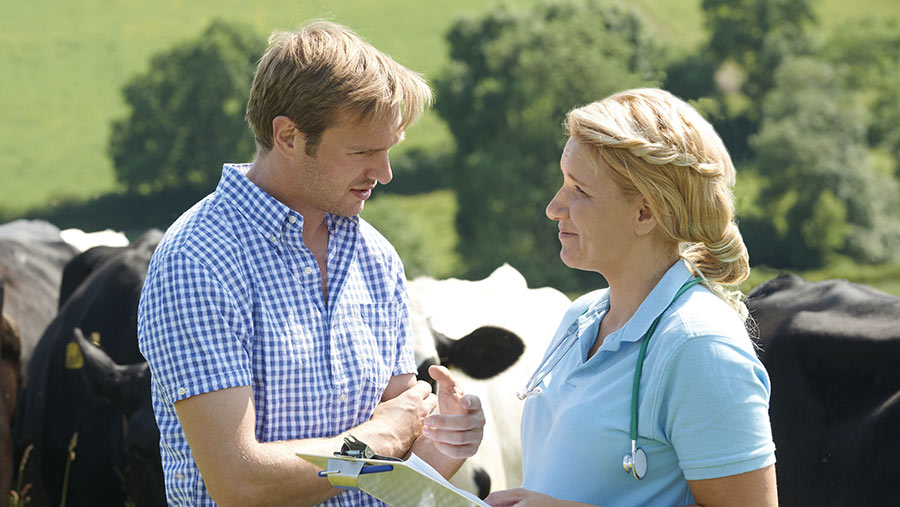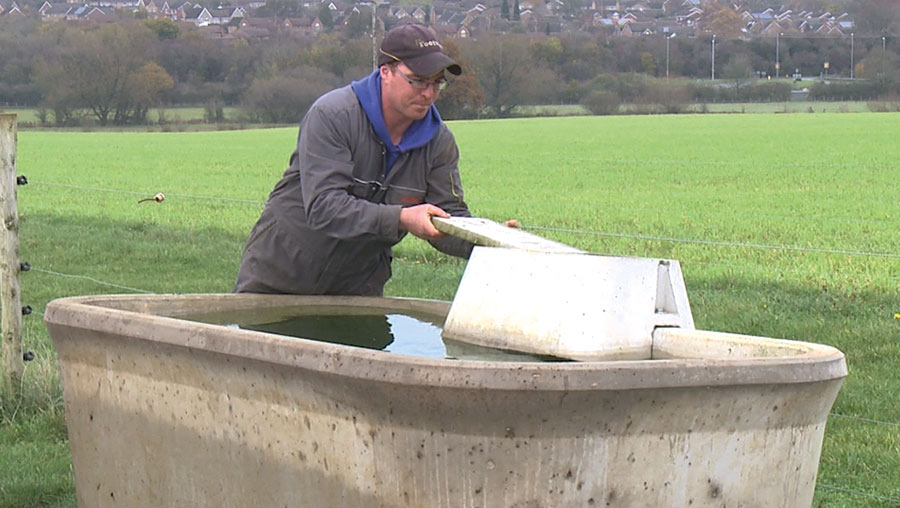Cattle health body launches new approach to TB
 © Adobe Stock
© Adobe Stock A new tool to help farmers tackle TB has been launched by the cattle health certification standards regulatory body Checs.
The TB entry level membership scheme is designed to enable vets to engage with farmers about TB and put in place biosecurity measures to reduce the risk of a TB breakdown.
The scheme involves farmers adopting a simpler set of biosecurity measures than Checs’ existing TB Herd Accreditation, which has had limited take-up because of its tough requirements, according to Keith Cutler, chair of the Checs technical committee.
See also: 3 steps to implement a bovine TB contingency plan
Sarah Tomlinson, a farm vet and an adviser to the TB Advisory Service, who helped develop the new approach, says: “This is a tool [that], as a farm vet I can [use to] go on-farm and start a conversation about TB, and, more importantly, what we can do, as a team, is put things in place on-farm – some of which might already be there – to reduce the risk of a TB breakdown or reduce the length of a TB breakdown.”
Six factors
The scheme is based on the idea of “no regrets” biosecurity: simple, easy-to-implement measures that don’t require a large financial investment or time commitment but reduce the risk of TB transmission from cattle to cattle, badger to cattle or cattle to badger.
To take part, the farmer and their vet choose an option from each of six risk factors that is most appropriate for the farm.
The six factors are:
- Minimise TB risk from purchased cattle (for example, only buying from lower risk herds)
- Minimise TB risk from cattle in other herds (for example, never grazing cattle on contiguous grazing at the same time as a neighbour’s herd)
- Minimise TB risk from your own animals (for example, culling inconclusive reactors)
- Minimise the spread of TB through muck or slurry (for example, not spreading imported muck or slurry on cattle-grazing land)
- Reduce TB risk from badgers (for example, monitoring for badger activity with cameras or mapping)
- Have a TB test failure contingency plan (for example, having a plan for youngstock to leave the farm).
Ms Tomlinson says: “This [final factor] was really important for me because I know the impact a TB breakdown can have financially, but also on the physical and mental health of the farmers. Hopefully this will reduce the stress and anxiety around a breakdown.”
TB facts
- Average cost of a breakdown is £18,600
- It takes only 10 TB bacteria, inhaled, to infect a cow
- The tuberculine skin test misses one in five reactors
- The interferon gamma test misses one in 10
- Bacteria survive for up to six months in stored slurry
- Badgers can access licks and troughs up to a metre off the ground and get through very small gaps (ensure they are no more than 7.5cm)
How to take part
To get involved, farmers need to apply through a participating Checs cattle health scheme. To find a scheme in your area, go to the Checs website.
The annual charge for membership is likely to range from £10 to £40 depending on whether the farmer is already participating in other Checs disease programmes.
Checs has produced the following video which explains some of the issues involved:
Case study: Tom Herbert, Manor Farm, Brackley, Northamptonshire
Cattle farmer Tom Herbert has been working with Towcester Farm Vets to reduce the risk of TB, and is now an accredited member of the entry level scheme.
“TB testing can be stressful and there’s the emotional worry from the injection to the reading date – it’s quite draining,” he says.
In June 2019, one of his cows failed a skin test. A government vet then highlighted areas around the farm where biosecurity could be improved to reduce the chances of getting another reactor.
“We were advised to fence away from neighbours and watercourses, feed concentrates in the morning rather than evening so as not to attract badgers, and generally take biosecurity more seriously,” says Mr Herbert.

Tom Herbert has installed raised water troughs to prevent use by wildlife © Checs
Cattle now have access only to raised water troughs, feed buckets and salt licks, and Mr Herbert no longer creep-feeds at grass, to discourage contact with wildlife.
As the farm is in an annual testing area, the autumn timing of the test fits in well with the management and structure of selling stock.
“But the tests do stress the animals and staff and there is a risk to our business as it’s geared around selling stock pre-winter,” he says. “If we can’t sell, we might not have enough feedstuff for keeping stock through the winter.”
Mr Herbert knows there are active badger setts on the farm and has taken all the precautions he can to minimise contact, monitoring them, double fencing and isolating buildings.
“We will always look at where we can make improvements, but we will never be able to completely eradicate the risk,” he says.
“Any form of disease control is going to help improve herd health and if you have an accreditation to demonstrate that, it will give buyers more confidence to invest in your animals.”
Farm facts
- 138ha (341 acres)
- 50 pedigree Simmental suckler cows plus youngstock
- Early spring calving
- 300 Lleyn and 100 Suffolk-cross sheep
- Beef and lamb boxes sold locally
